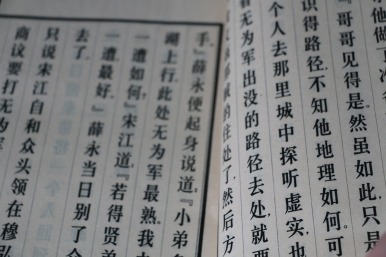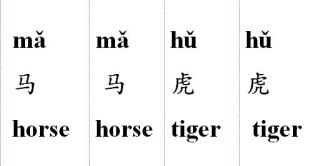Chinese Character Structures
汉字结构:hàn zì jié gòu

Chinese characters may look like squiggly doodles or intricate shapes to you. You know they have meanings, but you know nothing about it. Even when you want to learn Chinese, you feel intimidated by their exotic, mysterious and complex forms and do not have the courage to dive in.
Well, Chinese characters are not random doodles; they in fact have structural patterns. Knowing the Chinese character structures and radicals can help you visualize the formation of the characters, hence, to make memorization much easier.
The structures of Chinese characters roughly can be divided into two different kinds, which are the single component (独体字: dú tǐ zì) and the compound (合体字: hé tǐ zì).
The single component refers to the characters that have only one complete and independent component, while the compound refers to those characters that have more than one component.
Most of the Chinese characters are made up of two or more components and the major structures of these characters are left-right structure, top-bottom structure and enclosed structure. Characters of left-right structure and top-bottom structure count for about 90% of all Chinese characters.
Here is a list of main Chinese character structures:
- Single component (独体字: dú tǐ zì).
Characters only have one independent component. They have fewer strokes than characters with compound components; therefore, they are usually easier to write and to remember. Examples: 目,小.
- Left-Right Structure (左右结构:zuǒ yòu jié gòu)
Formed by two components side by side, left and right. For example: 你,好.
- Top-Bottom Structure (上下结构:shàng xià jié gòu)
Formed by two components, top and bottom. For example: 爸,雪.
- Half-Enclosed Structure (半包围结构:bàn bāo wéi jié gòu)
Two or three sides of a character are enclosed. For example: 还,看,爬,左,同,凶, 风.
- All-Enclosed Structure (全包围结构: quán bāo wéi jié gòu)
All four sides of a character are enclosed. For example: 国,围.
- Left-Middle-Right Structure (左中右结构:zuǒ zhōng yòu jié gòu)
Three components with the formation of left, middle and right. For example: 做,谢.
- Top-Middle-Bottom Structure (上中下结构:shàng zhōng xià jié gòu)
Three components with the formation of top, middle and bottom. For example: 菜,鼻.
Above are the common Chinese character structures, there are also some special structures, such as :
- Character 品(pǐn) Structure (品字结构: pǐn zì jié gòu )
Three equal component formation, for example: 品,磊,鑫(xīn),森(sēn),淼(miǎo),焱(yàn)
- Inlay Structure (镶嵌结构:xiāng qiàn jié gòu)
For example: 果,爽,幽,坐.
In order to memorize Chinese characters efficiently, you also need to know strokes and radicals. I will talk about those in separate articles.


